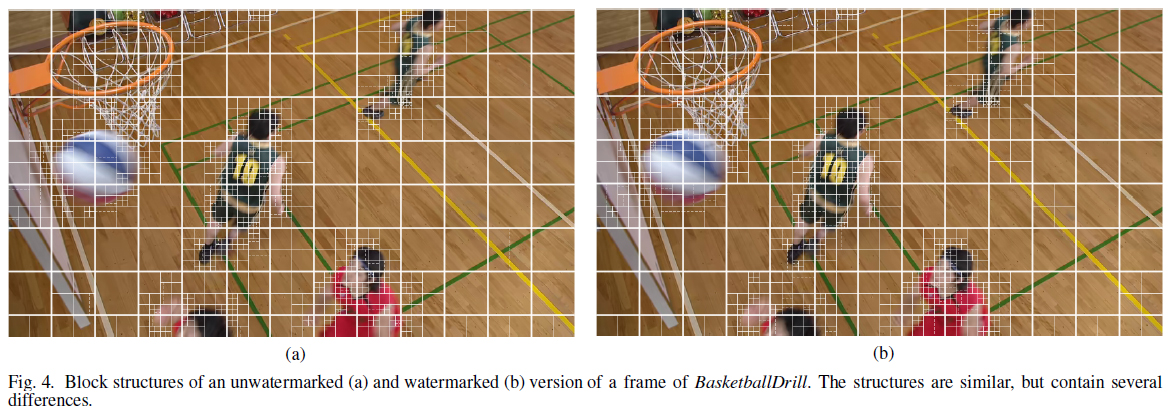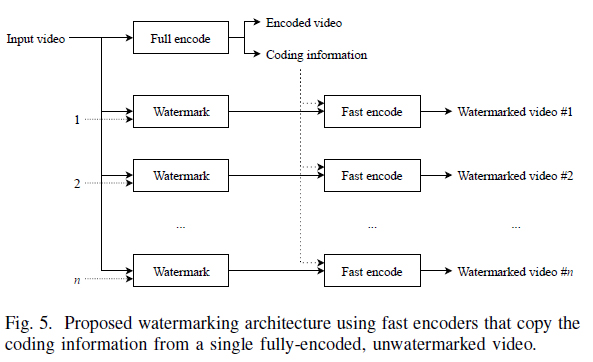Our paper, “A Scalable Architecture for Uncompressed-Domain Watermarked Videos”, has been accepted for publication in IEEE Transactions on Information Forensics and Security.

Video watermarking is a well-established technology to help identify digital pirates when they illegally re-distribute multimedia content. In order to provide every client with a unique, watermarked video, traditional distribution architectures separately encode each watermarked video. However, since these encodings require a high amount of computational resources, such architectures do not scale well to a large number of users.
Therefore, this paper proposes a novel architecture that uses fast encoders instead of traditional, full encoders. The fast encoders re-use the coding information from a single, previously-encoded, unwatermarked video in order to speed up the encodings of the watermarked videos. As a result, the complexity of a fast encoder is only a fraction of the complexity of a full encoder. Due to a high correlation of the re-used coding information with the optimal coding information, the compression efficiency and watermark robustness decrease only slightly. Most importantly, the proposed fast encoder speeds up the compression process with a factor of 115, resulting in a low complexity similar to that of a video decoder.
Consequently, video distributors can use the proposed architecture to deliver high-quality watermarked videos on a large-scale without requiring an excessive amount of computational resources.

Paper: A Scalable Architecture for Uncompressed-Domain Watermarked Videos







